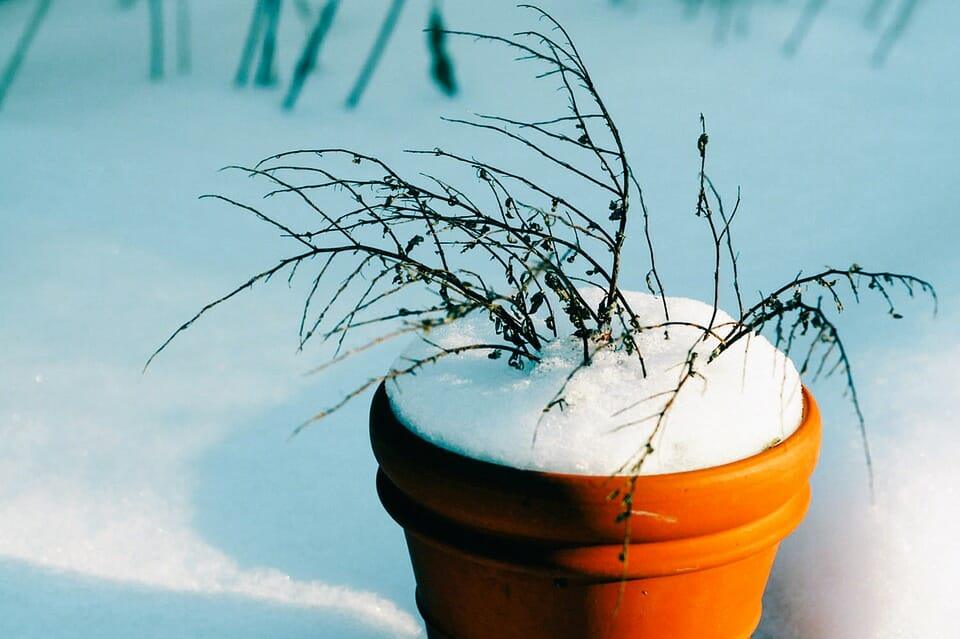|
Listen To The Article
|
Raise your hand if you’ve ever scored a massive deal at your local nursery at the end of the gardening season. Keep your hand up if those massive deals were on half-dead plants in plastic containers.
I did that once. I couldn’t resist all those dirt-cheap perennials that would keep me in strawberry rhubarb pies until my dotage. But I should have known better. I’m always in overwhelm mode in late summer and fall, trying to keep up with the plants that still need tending as well as with harvesting and preserving produce and getting ready for winter.
Taking on another task, like figuring out where to plant perennials and actually getting them into the ground, was not a smart idea. And so, confession time: I didn’t plant any of them. They just sat there in their flimsy plastic pots all winter. In the spring, the peonies somehow, miraculously, sent out shoots and I got those into the ground. The rest looked beyond hope and I tossed them into the compost pile.
Need Non-GMO Seeds? Get Them From A Company You Can Trust!
I’ve since learned that there are ways to overwinter plants in pots regardless of whether they’re geriatric escapees from the nursery or potted plants that you’ve had in your garden all season long.
Why Not Just Overwinter in Pots?
There are several reasons why plants have a hard time surviving the winter in containers — and most are related to the plant’s roots.
First, roots are typically hardy to two zones warmer than the plant. If, for instance, your plant is hardy to Zone 4, the roots are only hardy to Zone 6. Roots don’t have to be as tough because they’re protected by the soil. However, the small amount of soil in a pot doesn’t provide enough insulation to adequately protect roots.
Second, pots are more susceptible to freeze/thaw cycles because that small amount of soil can warm up very quickly. If you live in a colder zone, plant roots will freeze regardless of whether the plant is in the ground or in a pot. If the roots are hardy to your zone, frozen roots are part of the plant’s life cycle and nothing to worry about. However, while roots might freeze, they don’t go dormant. When the ground warms up enough, tender new roots will grow. But those young roots don’t have the ability to withstand colder temperatures; they will die when it gets cold again. This process of producing new roots that die off shortly afterward can seriously weaken the plant. It’s actually better for roots to remain consistently frozen (or at least consistently cold) all winter long.
Third, if your containers are left on a flat surface the frost, ice and snow that accumulates on the pot’s soil can lead to root rot. As temperatures fluctuate, that frozen moisture thaws and saturates the pot. Once the temperatures dip again, the wet soil freezes. And the next time a thaw cycle hits, more ice and snow thaws and is added to the pot’s already saturated soil.
There’s no doubt that potted plants have it tough in the winter. But as the story of my peonies shows, they can pull through extended cold spells. Still, rather than just cross your fingers and hope for the best, there are things you can do to help your potted plants make through the winter.
Bring Them Inside
This seems like the most obvious suggestion, but you need to be careful about where exactly you move your plants to. Since most perennials require a period of dormancy, you can’t move them into a warm sunny window and treat them like houseplants (the exception here are geraniums). An unheated garage or shed is ideal, but a cool basement can also work. If you overwinter your perennials this way, you’ll need to water them whenever the soil gets completely dry.
Use a Sheltered Outdoor Spot
If you don’t have a suitable indoor spot, or if you have too many pots to find space for, another option is to move them to a sheltered outdoor location and cover them with mulch.
The best spot is on the north side of your house, garage, or shed. Lining up pots along a house (or heated garage) wall will provide them with some consistent warmth, while also blocking the sun on warmer days to minimize freeze/thaw cycles.
For extra protection, bury the pots in mulch — and at this time of year, it’s easy enough to find leaves for that job.
Wrap Them Up
While gardeners may wrap above-ground growth — like shrubs, hydrangeas and rosebushes — in burlap over the winter, potted plants have a different issue. As explained earlier, it’s usually not the plant growth that needs protecting in a pot — it’s the roots. You can insulate and protect your roots by wrapping the pots in bubble wrap, burlap, or old sheets.
Bury Them, Pot and All
This is the most labor-intensive option, but it gives your plants the best chance of survival. And while it still involves some sort of planting, it doesn’t have to be as strategic as choosing a permanent place for the plant.
Depending on the number of plants you have, dig a hole or a trench in your garden or compost pile. The depth of the hole depends on how large your pots are. Ideally, the pots should be laid — or at least tilted — on their sides to prevent thawed moisture from accumulating on top. Once placed in the trench, the pots should be covered with mulch, or lightly covered up with soil. If you don’t have the space — or the time — to dig a big enough trench and need to leave the pots upright, bury only two-thirds of the container to improve drainage.
Potted plants do need a little bit of extra help to make it through the winter, but they’ll reward those efforts in the spring. What are your tried-and-true tricks for overwintering potted plants? Tell us in the comments below.
What advice would you add? Share it in the section below:
 Off The Grid News Better Ideas For Off The Grid Living
Off The Grid News Better Ideas For Off The Grid Living




